Yellow-Legged Hornet
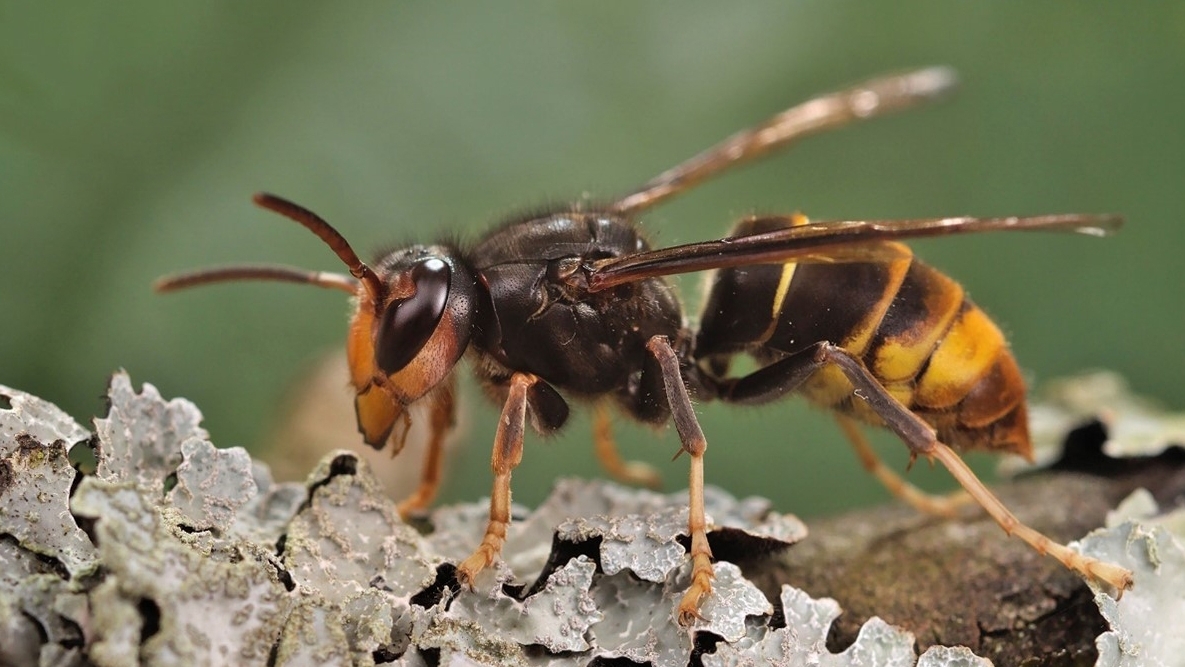
The yellow-legged hornet (Vespa velutina) is a social wasp species that constructs nests above ground made from paper-like materials. These nests can be found hanging in trees and on structures such as barns, garages and sheds. Nests can be large and contain up to 6,000 workers.
Yellow-legged hornets feed on a variety of insects, including honeybees. If allowed to establish in the United States, these invasive pests could threaten populations of domestic and feral honey bees – some of which are already endangered – and other native pollinators. Their presence could also disrupt the pollination of many crops.
What To Look For
The yellow-legged hornet is not native to the United States, but it can be mistaken for a few domestic species. Take a look below at its distinctive markings. Then review images of the look-alike species side by side with the yellow-legged hornet in the "Yellow-Legged Hornet Look-Alikes" section. These other species are more likely to be found in the United States and do not pose a significant environmental or agricultural threat. In fact, some of these look-alikes can be beneficial pollinators.
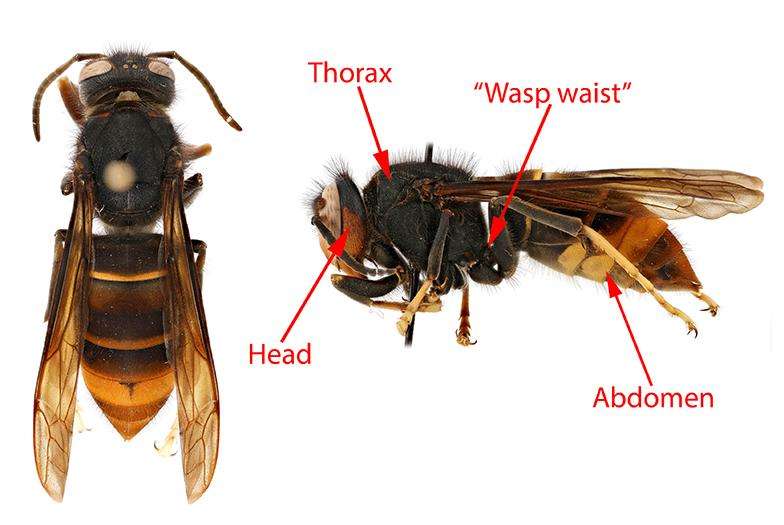
Body length
- From 0.7 to 1 inch long
Coloration
- Head: Mostly black with some front-facing yellow or orange and black eyes
- Thorax: Mostly solid dark brown or black
- Abdomen: Alternating bands of dark brown or black and yellow or orange
- Legs: Brown or black near the body, ending in yellow segments
Yellow-legged hornets have a “wasp waist” between the thorax and abdomen.
Report Plant Pests and Diseases
Have you seen this pest or signs of pest damage? Immediately report your findings.
Find your State plant regulatory official
Find your State plant health director
In Georgia only, people should report potential sightings of the yellow-legged hornet through the Georgia Department of Agriculture’s online form.
Controlling Yellow-Legged Hornets
The yellow-legged hornet was first detected in the United States when a beekeeper in Savannah, GA, found an unusual hornet on his property and reported it to the Georgia Department of Agriculture. On August 9, 2023, APHIS confirmed the University of Georgia’s identification of this insect as a yellow-legged hornet. Fourteen days later, a Georgia Department of Agriculture team safely eradicated the hornet nest in Savannah. APHIS and Georgia officials continue to monitor the area for any other nests.
Since the initial detection in Georgia, yellow-legged hornets have also be found in South Carolina. The pest has not been found in any other State or Territory.
Bald-faced hornet (Dolichovespula maculata)
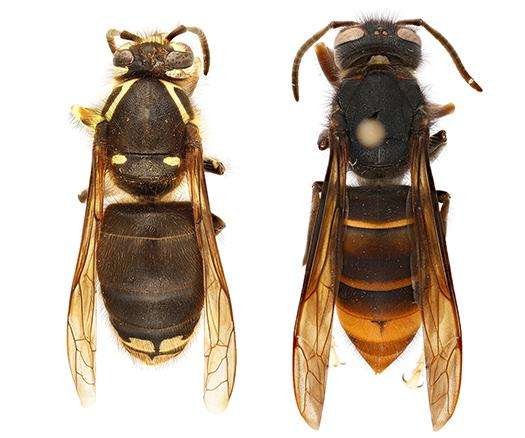
- Found throughout much of North America
- Workers grow to about 0.6 inches long, slightly smaller than the yellow-legged hornet
- Mostly black with pale yellow to white markings
- Pale yellow to white face
- Nests look similar to yellow-legged hornets’ nests, also made from paper-like materials
- Can be aggressive when disturbed
Elm sawfly (Cimbex americana)
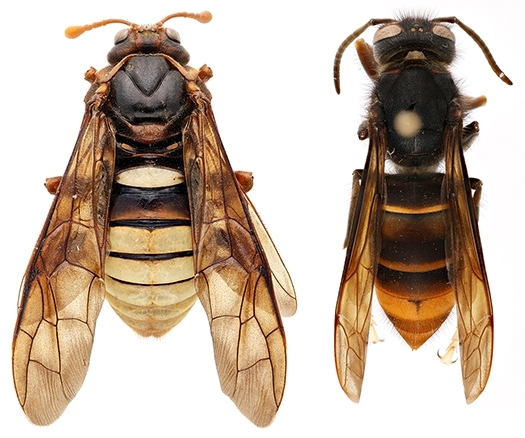
- Found throughout much of North America
- Ranges in size from 0.75 to 1 inch long
- Lacks a “wasp waist” between the thorax and abdomen (unlike the yellow-legged hornet)
- Has a white or yellow oval spot on the thorax
- Does not have a stinger
Note: Females may be mostly yellow, more so resembling a wasp.
European hornet (Vespa crabro)
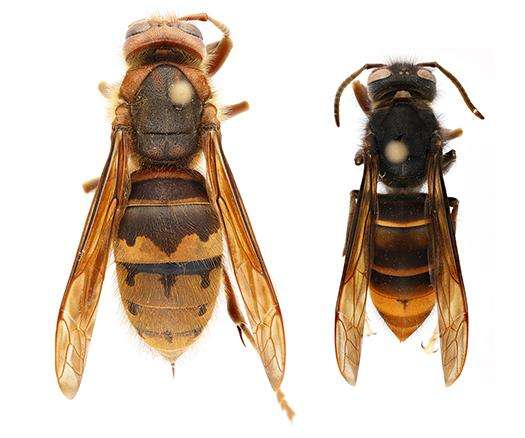
- Found in the eastern United States, especially in the Southeast
- Ranges in size from 1 to 1.5 inches long
- Markings can vary, but there are typically brown to black “teardrop” markings on the primarily yellow abdomen (the yellow-legged hornet has more uniform bands)
Note: The European hornet is not found west of the Rocky Mountains.
Great golden digger wasp (Sphex ichneumoneus)
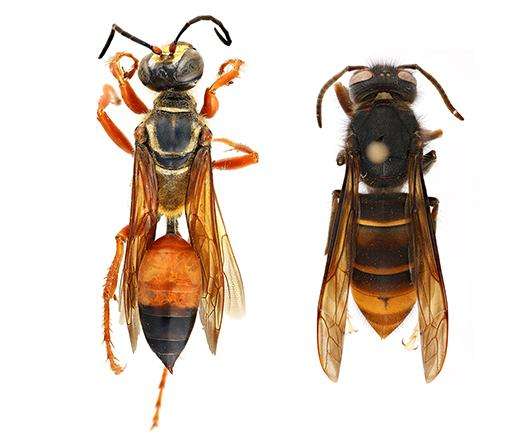
- Found throughout much of North America
- Is about 1 inch long
- Has a “wasp waist” that is very narrow and long
- Has a dark brown to black body, with orange to yellow legs
- Has an abdomen that is black with solid orange/red toward the front end, with no banding like the yellow-legged hornet
- Has golden hairs covering the head and middle of the body, which is unique to this species
Hoverfly (Spilomyia spp.)
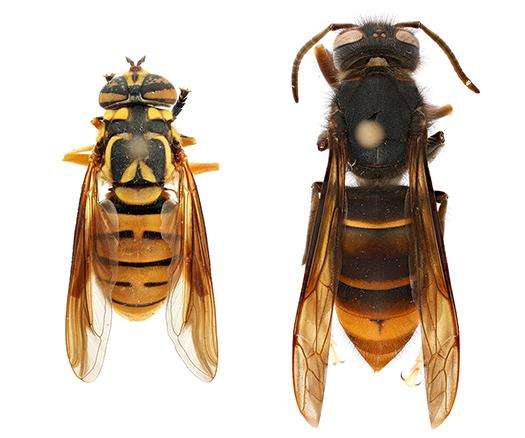
- Found throughout much of North America
- Workers grow to about 0.5 inches long, slightly smaller than the yellow-legged hornet
- Often is more brightly marked with yellow or orange and black compared with the yellow-legged hornet
- Has only one pair of wings, while hornets have two pairs
- Does not have a stinger
Northern giant hornet (Vespa mandarinia)
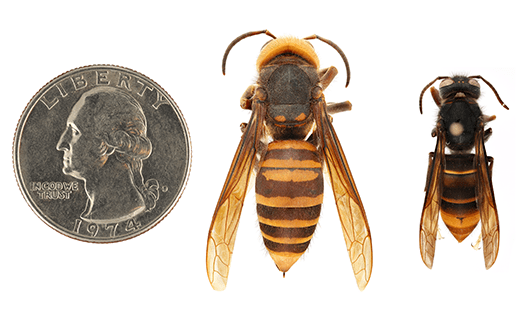
- Ranges in size from 1.5 to 2 inches long, significantly longer than the yellow-legged hornet
- Has an orange head
Note: The northern giant hornet was first detected in northwest Washington State in 2019. State officials located and eradicated four nests by the end of 2021. There have been no confirmed reports of northern giant hornets anywhere in the United States since then.
Western cicada killer (Sphecius grandis)
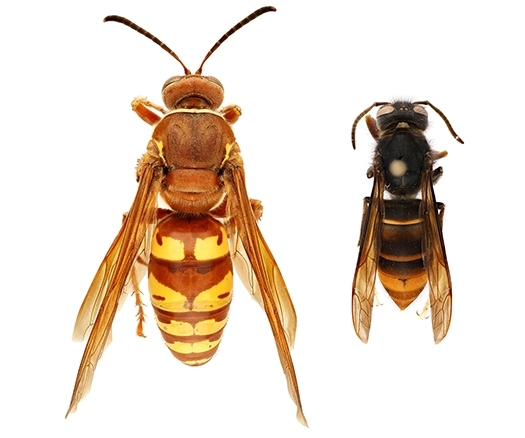
- Found in the western United States
- Can be up to 2 inches long
- Has a smaller head in proportion to the body than does the yellow-legged hornet
- Has different banding on the abdomen compared with the yellow-legged hornet
- Has a reddish thorax instead of the black thorax on the yellow-legged hornet
- Has round eyes, unlike hornets
Various species of paper wasps (Polistes spp.)
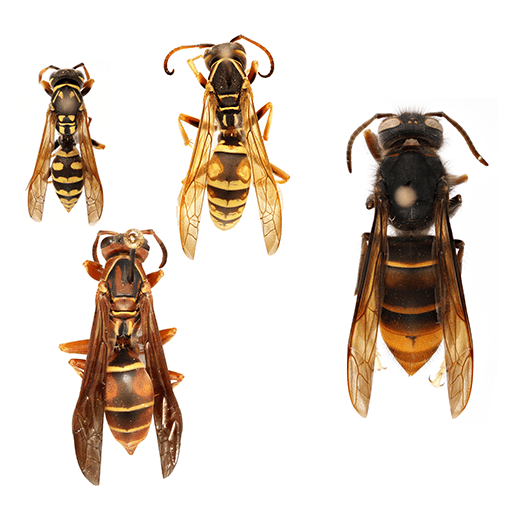
- Many different species are found throughout the United States
- Workers grow to about 0.5 inches long, slightly smaller than the yellow-legged hornet
- Most species have a very narrow waist
Various species of yellowjackets (Vespula spp.)
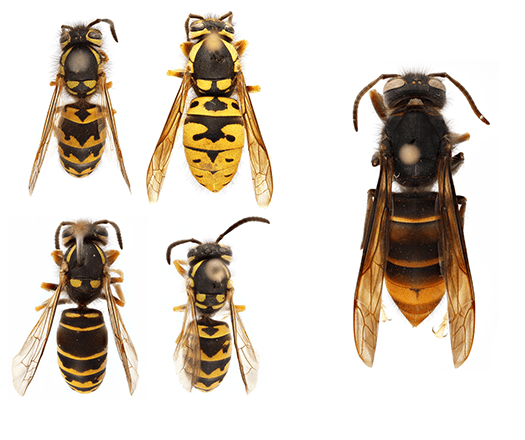
- Different species are found throughout the United States
- Workers grow to about 0.5 inches long, slightly smaller than the yellow-legged hornet
- Often are more brightly marked with yellow or orange and black compared with the yellow-legged hornet
Acknowledgements
All photographs shown above are the products of APHIS’ Identification Technology Program (ITP). Colorado State University’s C. P. Gillette Museum of Arthropod Diversity provided the specimens.
ITP’s pest identification experts use high-technology imaging systems, software, and molecular diagnostics to create a wide array of digital and other identification tools. Visit idtools.org to browse their extensive pest identification resources.
If you are interested in pollinator health, you may find these three ITP identification resources useful:
You may also wish to visit the Invasive Hornets Project for hornet images.
Spring: A fertilized queen emerges after surviving the winter. She enters a brief pre-nesting stage. The queen feeds on sap while her ovaries develop, and she looks for a suitable nesting site. She usually nests above ground, in trees.
Summer: Once the queen selects a suitable site, she enters a solitary phase. During this time, she alone is responsible for building a nest, foraging, laying eggs, and caring for young. The queen later becomes completely nest-bound, and the workers assume all duties outside of the nest.
Late Summer/Early Fall: When temperatures start to peak in summer, the colony begins producing males and the next year’s queens. To obtain food with higher protein for the developing “reproductives,” yellow-legged hornets may attack honey bee hives in the late summer/early fall. Yellow-legged hornets may attack other social bees and wasps at this time.
Fall: Males develop and leave the nest before females. They will perch at the entrance of nests waiting to mate with the new queens, which emerge about 1 month later. New queens must mate before waiting out the winter because males will not be present when the queens emerge the following spring.
Winter: After mating, a new queen will remain in a sheltered spot to survive the colder months. The cycle begins again the following spring when the new queens emerge.

